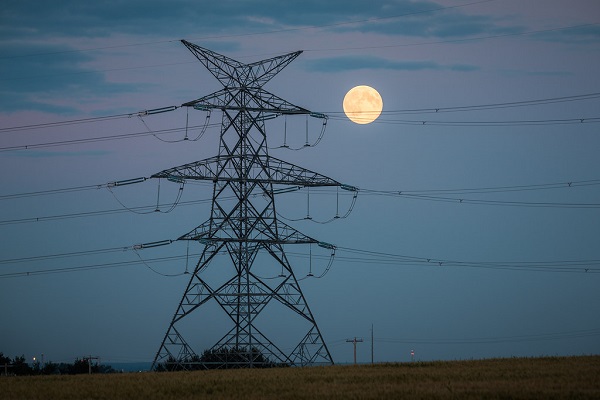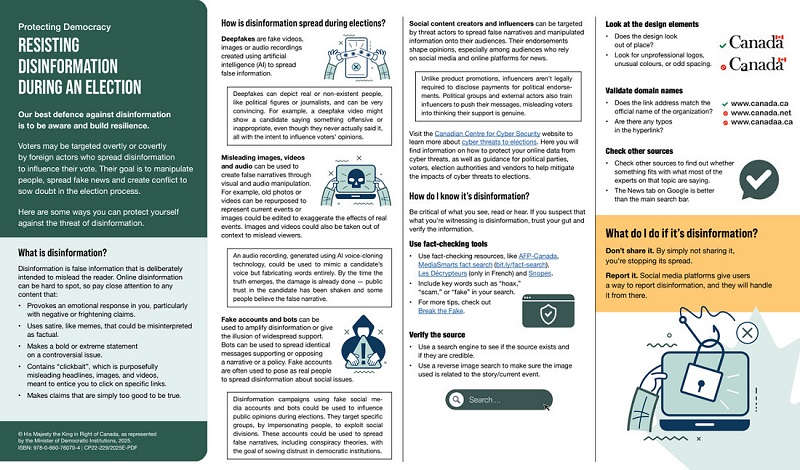Business
Feds move target for net-zero grid back 15 years. Western provinces say it’s not of their business

From Resource Works
“These latest measures fail to recognize provinces have jurisdiction over the development and management of electricity. The federal regulations are duplicative, inefficient, and add to costs.”
The federal government has clarified its clean-energy goal for a net-zero power grid.
Its final Clean Electricity Regulations target a net-zero grid across the country by 2050. But didn’t Ottawa previously, in August 2023, set a goal of 2035?
Certainly, one leading environmental group declared: “The federal government has committed to achieving zero-emissions electricity by 2035.”
And a law firm that analyses energy matters told followers in August 2023: “Government of Canada releases draft Clean Electricity Regulations aimed at achieving net-zero emissions from Canada’s electricity grid by 2035.”
What Ottawa said in August 2023 was this: “The proposed regulations would set performance standards that would ensure that the sector achieves significant transformation by 2035, so that a robust foundation of clean electricity is available to power the electric technologies (e.g., electric transportation) needed to support Canada’s transition to a net-zero GHG emissions economy by 2050.”
Announcing that 2035 goal was a case of fuzzy wording, according to Energy Minister Jonathan Wilkinson. He said Ottawa could have been more precise in its language and context around what exactly the 2035 target referred to.
He now says: “2035 was really having a plan as to how you were going to reduce emissions to be able to get to a net-zero economy by 2050… Perhaps we were not as precise with our language as we should have been.”
Environment Minister Steven Guilbeault issued an update in February 2024: “All G7 countries, including Canada and the United States, have committed to transitioning to a net-zero electricity grid as a foundational measure to help achieve low-carbon economies by 2050.”
And he now says: “We knew from the get-go, from where we are to where we need to be, we couldn’t get there in 10 years… It was always our intention that we want to see things happening before 2035. But that we wouldn’t be able to get to a decarbonized grid before 2050.”
Whatever they said, meant, clarified, updated, and/or corrected, the new regulations face opposition and a court challenge from Alberta, for one.
Premier Danielle Smith criticized the latest regulations as unconstitutional, arguing they seek to regulate an area of provincial jurisdiction.
“After years of watching the federal government gaslight Canadians about the feasibility of achieving a net-zero power grid by 2030, we are gratified to see Ottawa finally admit that the Government of Alberta’s plan to achieve a carbon-neutral power grid by 2050 is a more responsible, affordable, and realistic target.
“That said, the federal government’s finalized electricity regulations remain entirely unconstitutional as they seek to regulate in an area of exclusive provincial jurisdiction. They also require generators to meet unreasonable and unattainable federally mandated interim targets beginning in 2035, which will still make electricity unaffordable for Canadian families.
“Alberta will therefore be preparing an immediate court challenge of these electricity regulations.”
Saskatchewan’s government said in a news release that it will simply not comply with the new regulations.
“Our government unequivocally rejects federal intrusion into our exclusive provincial jurisdiction over the electricity system.
“Saskatchewan will prioritize maintaining an affordable and reliable electricity grid to support our regional needs and growth. The federal Clean Electricity Regulations are unconstitutional, unaffordable, unachievable, and Saskatchewan cannot, and will not, comply with them.”
The Business Council of BC slammed the new federal regulations on multiple grounds: constitutionality, jeopardizing the reliability of electricity delivery, higher costs for businesses and households, limiting investment, regional inequities, technological limitations, and risks to greenhouse-gas management.
“These latest measures fail to recognize provinces have jurisdiction over the development and management of electricity. The federal regulations are duplicative, inefficient, and add to costs.”
And: “It is important to recognize that Canada’s combined electricity systems are already 84% non-emitting, and that electricity represents less than 10% of Canada’s total emissions. The sector has made more progress in reducing emissions than any other sector in the country over the past two decades.
“We urge the government to set aside these new regulations and work collaboratively with the electricity sector to develop a more balanced approach that respects provincial roles and will not risk undermining investment and driving up costs. The path to a cleaner energy system requires cooperation, not regulation.”
The latest announcement from Ottawa includes these statements:
- “Federal analyses find that the Regulations have no impact on electricity rates for the vast majority of Canadians, and in some cases, will even have a slightly positive impact on rates. Independent third-party expert modelling substantiates federal analysis that the Regulations are feasible.
- “To ensure rates are affordable for Canadian families over the coming decade, the federal government is investing $60 billion to support the electricity sector.
- “The adoption of efficient electric appliances, vehicles, and heat pumps presents an enormous opportunity for families to save money on their energy bills.
- “In the shift to clean electricity, 84% of households are expected to spend less on their monthly energy costs, when accounting for the over $60 billion in federal clean electricity incentives. This could lead to $15 billion in total energy-related savings for Canadians by 2035.”
All subject to clarification, updating, and/or correction—and Alberta’s promised court case.
2025 Federal Election
MEI-Ipsos poll: 56 per cent of Canadians support increasing access to non-governmental healthcare providers

-
Most believe private providers can deliver services faster than government-run hospitals
-
77 per cent of Canadians say their provincial healthcare system is too bureaucratic
Canadians are increasingly in favour of breaking the government monopoly over health care by opening the door to independent providers and cross-border treatments, an MEI-Ipsos poll has revealed.
“Canadians from coast to coast are signalling they want to see more involvement from independent health providers in our health system,” explains Emmanuelle B. Faubert, economist at the MEI. “They understand that universal access doesn’t mean government-run, and that consistent failures to deliver timely care in government hospitals are a feature of the current system.”
Support for independent health care is on the rise, with 56 per cent of respondents in favour of allowing patients to access services provided by independent health entrepreneurs. Only 25 per cent oppose this.
In Quebec, support is especially strong, with 68 per cent endorsing this change.
Favourable views of accessing care through a mixed system are widespread, with three quarters of respondents stating that private entrepreneurs can deliver healthcare services faster than hospitals managed by the government. This is up four percentage points from last year.
Countries like Sweden and France combine universal coverage with independent providers and deliver faster, more accessible care. When informed about how these health systems run, nearly two in three Canadians favour adopting such models.
The poll also finds that 73 per cent of Canadians support allowing patients to receive treatment abroad with provincial coverage, which could help reduce long wait times at home.
Common in the European Union, this “cross-border directive” enabled 450,000 patients to access elective surgeries in 2022, with costs reimbursed as if they had been treated in their home country.
There’s a growing consensus that provincial healthcare systems are overly bureaucratic, with the strongest agreement in Alberta, B.C., and Quebec. The proportion of Canadians holding this view has risen by 16 percentage points since 2020.
Nor do Canadians see more spending as being a solution: over half say the current pace of healthcare spending in their province is unsustainable.
“Governments shouldn’t keep doubling down on what isn’t working. Instead, they should look at what works abroad,” says Ms. Faubert. “Canadians have made it clear they want to shift gears; now it’s up to policymakers to show they’re listening.”
A sample of 1,164 Canadians aged 18 and older was polled between March 24th and March 28th, 2025. The margin of error is ±3.3 percentage points, 19 times out of 20.
The results of the MEI-Ipsos poll are available here.
* * *
The MEI is an independent public policy think tank with offices in Montreal, Ottawa, and Calgary. Through its publications, media appearances, and advisory services to policymakers, the MEI stimulates public policy debate and reforms based on sound economics and entrepreneurship.
Education
Schools should focus on falling math and reading skills—not environmental activism

From the Fraser Institute
In 2019 Toronto District School Board (TDSB) trustees passed a “climate emergency” resolution and promised to develop a climate action plan. Not only does the TDSB now have an entire department in their central office focused on this goal, but it also publishes an annual climate action report.
Imagine you were to ask a random group of Canadian parents to describe the primary mission of schools. Most parents would say something along the lines of ensuring that all students learn basic academic skills such as reading, writing and mathematics.
Fewer parents are likely to say that schools should focus on reducing their environmental footprints, push students to engage in environmental activism, or lobby for Canada to meet the 2016 Paris Agreement’s emission-reduction targets.
And yet, plenty of school boards across Canada are doing exactly that. For example, the Seven Oaks School Division in Winnipeg is currently conducting a comprehensive audit of its environmental footprint and intends to develop a climate action plan to reduce its footprint. Not only does Seven Oaks have a senior administrator assigned to this responsibility, but each of its 28 schools has a designated climate action leader.
Other school boards have gone even further. In 2019 Toronto District School Board (TDSB) trustees passed a “climate emergency” resolution and promised to develop a climate action plan. Not only does the TDSB now have an entire department in their central office focused on this goal, but it also publishes an annual climate action report. The most recent report is 58 pages long and covers everything from promoting electric school buses to encouraging schools to gain EcoSchools certification.
Not to be outdone, the Vancouver School District (VSD) recently published its Environmental Sustainability Plan, which highlights the many green initiatives in its schools. This plan states that the VSD should be the “greenest, most sustainable school district in North America.”
Some trustees want to go even further. Earlier this year, the British Columbia School Trustees Association released its Climate Action Working Group report that calls on all B.C. school districts to “prioritize climate change mitigation and adopt sustainable, impactful strategies.” It also says that taking climate action must be a “core part” of school board governance in every one of these districts.
Apparently, many trustees and school board administrators think that engaging in climate action is more important than providing students with a solid academic education. This is an unfortunate example of misplaced priorities.
There’s an old saying that when everything is a priority, nothing is a priority. Organizations have finite resources and can only do a limited number of things. When schools focus on carbon footprint audits, climate action plans and EcoSchools certification, they invariably spend less time on the nuts and bolts of academic instruction.
This might be less of a concern if the academic basics were already understood by students. But they aren’t. According to the most recent data from the Programme for International Student Assessment (PISA), the math skills of Ontario students declined by the equivalent of nearly two grade levels over the last 20 years while reading skills went down by about half a grade level. The downward trajectory was even sharper in B.C., with a more than two grade level decline in math skills and a full grade level decline in reading skills.
If any school board wants to declare an emergency, it should declare an academic emergency and then take concrete steps to rectify it. The core mandate of school boards must be the education of their students.
For starters, school boards should promote instructional methods that improve student academic achievement. This includes using phonics to teach reading, requiring all students to memorize basic math facts such as the times table, and encouraging teachers to immerse students in a knowledge-rich learning environment.
School boards should also crack down on student violence and enforce strict behaviour codes. Instead of kicking police officers out of schools for ideological reasons, school boards should establish productive partnerships with the police. No significant learning will take place in a school where students and teachers are unsafe.
Obviously, there’s nothing wrong with school boards ensuring that their buildings are energy efficient or teachers encouraging students to take care of the environment. The problem arises when trustees, administrators and teachers lose sight of their primary mission. In the end, schools should focus on academics, not environmental activism.
-

 2025 Federal Election2 days ago
2025 Federal Election2 days agoASK YOURSELF! – Can Canada Endure, or Afford the Economic Stagnation of Carney’s Costly Climate Vision?
-

 Alberta2 days ago
Alberta2 days agoMade in Alberta! Province makes it easier to support local products with Buy Local program
-

 2025 Federal Election16 hours ago
2025 Federal Election16 hours agoEuthanasia is out of control in Canada, but nobody is talking about it on the campaign trail
-

 2025 Federal Election2 days ago
2025 Federal Election2 days agoCSIS Warned Beijing Would Brand Conservatives as Trumpian. Now Carney’s Campaign Is Doing It.
-

 2025 Federal Election2 days ago
2025 Federal Election2 days agoNo Matter The Winner – My Canada Is Gone
-

 Alberta2 days ago
Alberta2 days agoProvince to expand services provided by Alberta Sheriffs: New policing option for municipalities
-

 2025 Federal Election2 days ago
2025 Federal Election2 days agoInside Buttongate: How the Liberal Swamp Tried to Smear the Conservative Movement — and Got Exposed
-

 2025 Federal Election12 hours ago
2025 Federal Election12 hours agoAI-Driven Election Interference from China, Russia, and Iran Expected, Canadian Security Officials Warn








